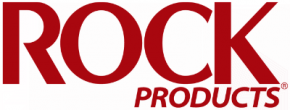I speak at various industry conferences, sometimes as often as 10 times a year, and I also write this regular monthly column along with one for our sister publication, as well as occasional other articles. This gives me a great pulpit to occasionally espouse our firm’s go-against-the grain view of the general economy, and our industry in particular, especially when I think the economic pundits are getting it wrong.
And now we see the Chicken Littles who were predicting a recession, which were the vast majority of analysts and fund managers on Wall Street, not to mention the professional economist community, backtracking … and quickly. Now some of the major Wall Street firms say the chances of a recession have fallen to 20% or less. So why the change? It is the age old truism – consumer sentiment.
Consumer Sentiment. July’s University of Michigan’s Consumer Sentiment Index concludes that American consumers haven’t felt this good about the economy since September 2021, and it is worth remembering what was going on then. Congress was flooding the economy with liquidity because of the pandemic, from PPP loans for businesses small and large to stimulus checks for almost all Americans. This liquidity drove the rifle-shot growth of consumer goods sales, causing supply chain disruptions made worse by the pandemic and the lockdown policies, further stoking consumer demand. So understandably, consumers felt good about the economy. Then the music stopped when the Fed started cranking up the interest rate wheel, and the initial shock softened consumer sentiment.
So earlier this summer, with the interest rate hikes of the last 18 months becoming old news, we touched that same level of sentiment once again. Stocks are higher, with some strategists even suggesting a record-setting year for the S&P 500. Inflation has fallen from north of 9% to 3%, marking one of the fastest drops in inflation measures ever recorded in economic history. And all of this while the domestic labor market remains tight, with a historically low unemployment rate. As a matter of fact, the July reading from the University of Michigan reflected these recent positive signs, with the index’s 13% jump from June and marking the largest monthly increase since 2005.
Frustration. But in what is a source of frustration to me, the positive vibes don’t square with what some economists continue to believe recent data is telling us about the U.S. economic outlook. Some maintain a steadfast view that the economy is going to take a turn for the worse within the coming months, although some do acknowledge that consumers are becoming more sanguine and buying into the soft-landing narrative.
And the prospect of a soft landing has become more prevalent as economic data has largely surprised economists to the upside recently, and stocks have rallied. With inflation at 3%, consumer prices increased at their slowest pace since March 2021, while the equally important producer price measures showed similar signs of cooling inflation.
Look, there are risks, although we think they are minimal. The biggest risk is the Fed’s efforts to restore inflation back to 2%, which could slowly squeeze household and business spending, generating a mild downturn early next year. Some economists support their position that a recession still looms based on slowing consumer spending and the lagging impacts of monetary policy.
But most importantly is a belief among some economists that, while inflation is cooling, the path for the final one-percentage-point decline in headline inflation to meet the Fed’s 2% goal will be much longer than the precipitous fall of the last few months. But sentiment trumps all, and as long as the American consumer feels good about the economy, they will keep their wallets open, and the chances of a measurable slowdown remain muted.
So what does this all mean for our industry? As I have written in the past, the Infrastructure Investment and Jobs Act will lubricate the construction aggregates industry for years to come, as that $1.2 trillion stimulus works its way through the broader construction economy. Regardless of the future of the general economy and the direction of all-important indicator known as Gross Domestic Product, construction aggregates will remain strong.
AVP Pulse Index. The previously flattened curve of the Index turned up this month, much sooner than I expected, rising 3.1% month-over-month, and 7.1% year-over-year. Key drivers include privately‐owned housing starts in May that were at a seasonally adjusted annual rate of 1,631,000. And once again, Industry Stocks Average Price rose 7.5% from last month’s reading. Finally, economists across the board are rolling back predictions of a recession.

Pierre G. Villere serves as president and senior managing partner of Allen-Villere Partners, an investment banking firm with a national practice in the construction materials industry that specializes in mergers and acquisitions. He has a career spanning almost five decades, and volunteers his time to educate the industry as a regular columnist in publications and through presentations at numerous industry events. Contact Pierre via email at [email protected]. Follow him on Twitter @allenvillere.
